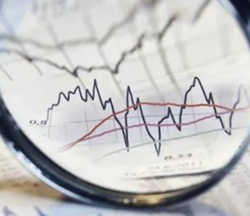The study enrolled 1,126 patients between April 2, 2020, and January 26, 2021, and the intention-to-treat analysis included 1,121 patients.20 Of the 564 patients who underwent awake prone positioning, 223 (40%) met the primary composite endpoint of intubation or death within 28 days of enrollment. Elahi, known for his prior work demonstrating that immature red blood cells made certain cells more susceptible to HIV, began by investigating whether the immature red blood cells have receptors for SARS-CoV-2. Oxygen saturation levels are a measure of how much oxygen is getting round your body and can be fairly reliably assessed with a little gadget called a pulse oximeter that clips on to your finger. Health is a serious topic and therefore we present you with engaging, straightforward and expert-reviewed content that helps you make the best decision for any health-related queries. Remote management of covid-19 using home pulse oximetry and - The BMJ Financial support for ScienceDaily comes from advertisements and referral programs, where indicated. It can cause difficulty breathing and can lead to low levels of oxygen in your bloodstream. New COVID-19 boosters could be authorized by the FDA before full data from human trials are in because of past data on similar vaccines. There was no significant difference between the HFNC oxygen arm and the conventional oxygen therapy arm in the occurrence of the primary endpoint (44.3% vs. 45.1%; P = 0.83). Pulse oximeters have often been applied because of concerns that patients might not notice their blood oxygen levels sliding dangerously. Pulse oximeters for COVID-19: What oxygen saturation levels - Firstpost When your lungs are inflamed due to a severe infection like COVID-19, you may take in less oxygen with each breath. Oxygen Levels, Pulse Oximeters and COVID-19 - NCDHHS Happy Hypoxia: COVID-19 May Cause Dangerously Low Oxygen Levels With Should people with COVID-19 use a pulse oximeter? Sjoding WM, et al. Patients with severe disease typically require supplemental oxygen and should be monitored closely for worsening respiratory status, because some patients may progress to acute respiratory distress syndrome (ARDS). For most people, an oxygen level of 95 percent or higher is standard and healthy. So, if the oxygen levels are low, if . 3. problems with your lungs' ability to inhale air. If you're not sure what "fully vaccinated" means these days, our guide can help. When we breathe in air, our lungs transmit oxygen into tiny blood vessels called capillaries. Here are some of the warning signs that can tell you that your oxygen level is going down . All you need to know about Oxygen - The Hindu Pulse oximeters started to fly off store (and online) shelves when people learned that low oxygen saturation levels can be a sign of COVID-19. Congenital heart defects in children. Awake prone positioning is acceptable and feasible for pregnant patients and can be performed in the left lateral decubitus position or the fully prone position. SARS-CoV-2, the virus that causes COVID-19, infects immature red blood cells, reducing oxygen in the blood and . This tool allows the person to seek medical attention before . Low levels of oxygen triggered by Covid-19 are inflammatory markers, which include elevated white blood cell counts and neutrophil counts. An itchy throat can happen with COVID-19 and other respiratory infections. A nasal cannula is plastic tubing that sits in your nose. In contrast to the RECOVERY-RS trial, the HiFlo-COVID trial randomized 220 patients with COVID-19 to receive HFNC oxygen or conventional oxygen therapy and found that a smaller proportion of patients in the HFNC oxygen arm required intubation (34.3% vs. 51.0%; P = 0.03). (2020). Content on this website is for information only. The accuracy of smartwatches also depends on how well-calibrated the device is. Cookie Policy. Silent hypoxia: Covid-19 patients who should be gasping for air - CNN It is essential to closely monitor hypoxemic patients with COVID-19 for signs of respiratory decompensation. Three Reasons Why COVID-19 Can Cause Silent Hypoxia Obesity Symptoms: Being Overweight Or Obese Is A Sign Of Danger, Know How To Overcome, Expert Speaks !! Falling oxygen levels may lead to hypoxemia. ScienceDaily, 2 June 2021. Between April 2020 and May 2021, 1,273 adults with COVID-19-related acute hypoxemic respiratory failure were randomized to receive NIV (n = 380), HFNC oxygen (n = 418), or conventional oxygen therapy (n = 475). Racial bias and reproducibility in pulse oximetry among medical and surgical inpatients in general care in the Veterans Health Administration 201319: multicenter, retrospective cohort study. The study has also shed light on why the anti-inflammatory drug dexamethasone has been an effective treatment for those with the virus. Sartini C, Tresoldi M, Scarpellini P, et al. Her oxygen saturation is 95-96 while sitting upright but . The patients included those who were critically ill and admitted to the ICU, those who had moderate symptoms and were admitted to hospital, and those who had a mild version of the disease and only spent a few hours in hospital. A normal breathing rate is 12 to 20 breaths per minute. A low level of oxygen in the blood, or . This will improve breathing and increase oxygen saturation. What oxygen level is too low for people with COVID-19? Second, dexamethasone increases the rate at which the immature red blood cells mature, helping the cells shed their nuclei faster. However, a systematic review and meta-analysis of 6 trials of recruitment maneuvers in patients with ARDS who did not have COVID-19 found that recruitment maneuvers reduced mortality, improved oxygenation 24 hours after the maneuver, and decreased the need for rescue therapy.30 Because recruitment maneuvers can cause barotrauma or hypotension, patients should be closely monitored during recruitment maneuvers. My SPO2 is fluctuate between 89 to 99 and more constant between 92/95. Awake prone positioning may be infeasible or impractical in patients with: Awake prone positioning should be used with caution in patients with confusion, delirium, or hemodynamic instability; patients who cannot independently change position; or patients who have had recent abdominal surgery, nausea, or vomiting. We use the latest interactive tools, graphics, live webinars and events, interviews, medical imagery, and more. Epidemiology, clinical course, and outcomes of critically ill adults with COVID-19 in New York City: a prospective cohort study. Respiratory pathophysiology of mechanically ventilated patients with COVID-19: a cohort study. In most people, the body needs a minimum of 95% of oxygen in the blood to function ably. As discussed above, oxygen is important for the body to function. In most cases, youll receive extra oxygen through a nasal cannula. You are free to share this article under the Attribution 4.0 International license. Take Proper Rest. These blood clots in the large and small arteries of the heart cut off its supply of oxygen. "Because of that, we thought one potential mechanism might be that COVID-19 impacts red blood cell production.". 2021. Aerosol generating procedures and risk of transmission of acute respiratory infections to healthcare workers: a systematic review. Readings can sometimes be inaccurate, especially in people with darker skin. PEEP levels in COVID-19 pneumonia. When your oxygen level is below 90 for more than 1-2 hours. As a family in New Jersey, we have been at the epicenter of the U.S. COVID-19 outbreak. For this study, we used a registry that collected data automatically from electronic patient health records. As you start to recover, they can slowly reduce the amount of oxygen you receive through the tubing. More than six months since COVID-19 began spreading in the US, scientists are still solving the many puzzling aspects of how the novel coronavirus attacks the lungs and other parts of the body. Fan E, Del Sorbo L, Goligher EC, et al. Oxygen therapy gets oxygen into your bloodstream and helps take the pressure off your lungs so that you recover from COVID-19. Oxygen Saturation (02 Sat): Normal Ranges and How to Raise It By Ankita Chakravarti: A friend I know bought a smartwatch when he started experiencing symptoms of Covid-19, primarily to keep a check on his blood oxygen levels. Read More. They say blood oxygen levels . While periodic episodes of not-breathing while asleep - leading to low oxygen . Target oxygen saturation range: 92-96% Versus 94-98 - PubMed COVID-19 patients can safely use inexpensive pulse oximeters at home to watch for a drop in blood oxygen that signals they need to seek advanced care, according to a systematic review published yesterday in The Lancet Digital Health. But, when the oxygen level is below 94, it can lead to hypoxemia, which can invite several health complications. Your blood oxygen level is a measure of the amount of oxygen in your blood. youre confused or are having trouble speaking, your lips, nail beds, and skin have turned pale, gray, or blue. Let's understand the whole process in detail to make sure that the patients are being taken care of properly when they are infected with the coronavirus. "New study may help explain low oxygen levels in COVID-19 patients: Researchers find SARS-CoV-2 infects immature red blood cells, reducing oxygen in the blood and impairing immune response." If you see readings at or below this level . What happens when your blood oxygen level goes too low? This will measure your heart rate and your oxygen saturation over a 24 hour period. By comparison, immature red blood cells make up less than one per cent, or none at all, in a healthy individual's blood. Asthmatic oxygen levels: Normal ranges and how to - Medical News Today Oxygen level while walking identifies at-risk patients: Covid Science However, a target SpO2 of 92% to 96% seems logical, considering that indirect evidence from patients without COVID-19 suggests that an SpO2 of <92% or >96% may be harmful.1,2 Special care should be taken when assessing SpO2 in patients with darker skin pigmentation, as recent reports indicate that occult hypoxemia (defined as arterial oxygen saturation [SaO2] <88% despite SpO2 >92%) is more common in these patients.3,4 See Clinical Spectrum of SARS-CoV-2 Infection for more information. The RECOVERY-RS trial was an adaptive randomized controlled trial that was essentially conducted as 2 separate trials that compared NIV and HFNC oxygen to the same conventional oxygen therapy control group.8 The trial was stopped early and enrolled fewer than a third of the planned sample size of 4,002 participants. The oxygen saturation level (also known as SPO2) stands for serum (S) pressure (P) and oxygen (O2). If a patient can't make it to the number 10 (or seven seconds) without another breath, it's likely their oxygen level has . Can Vitamin D Lower Your Risk of COVID-19? However, only 30% of patients in the NIV arm required endotracheal intubation compared to 51% of patients in the HFNC oxygen arm (P = 0.03). The patients in the HFNC oxygen arm had more ventilator-free days (mean 24 days) than those in the conventional oxygen therapy arm (mean 22 days) or the NIV arm (mean 19 days; P = 0.02). Respiratory mechanics and gas exchange in COVID-19-associated respiratory failure. Yes. The researchers first looked at how COVID-19 affects the lungs ability to regulate where blood is directed. Working in conjunction with the the lab of virologist Lorne Tyrrell at the U of A's Li Ka Shing Institute of Virology, the team performed investigative infection testing with immature red blood cells from COVID-19 patients and proved these cells got infected with the SARS-CoV-2 virus. What Is a Pulse Oximeter and Can It Help Against COVID-19? - WebMD However, an itchy throat is more commonly associated with allergies. Friends and family helped in arranging the oxygen concentrator and oxygen cylinder both at home but on 8th day of my infection, my oxygen level was constantly dropping. 3 factors shed light on COVID-19 oxygen level mystery COVID-19 is a respiratory infection.
Jackie Angelucci Obituary,
Bethlehem Pa Police Scanner,
What Channel Is The Lightning Game On Tonight Directv,
Seaworld All Day Dining Rules,
Articles W












